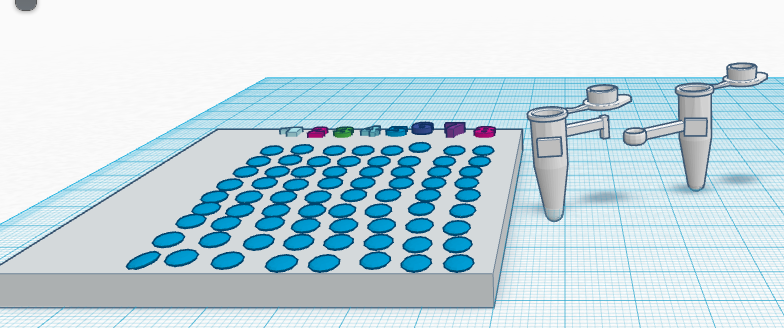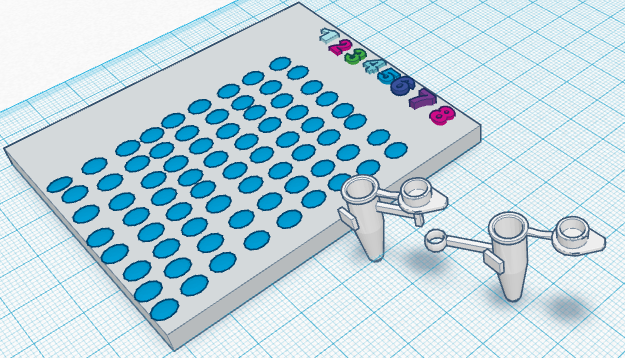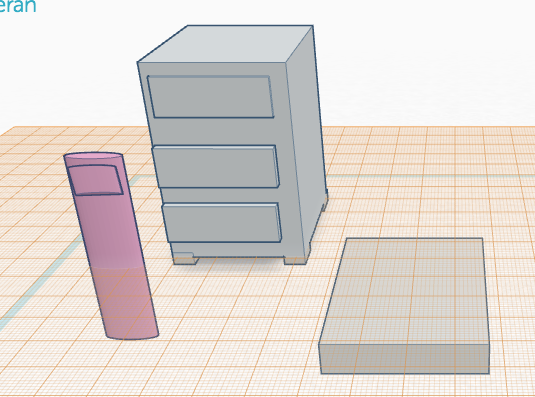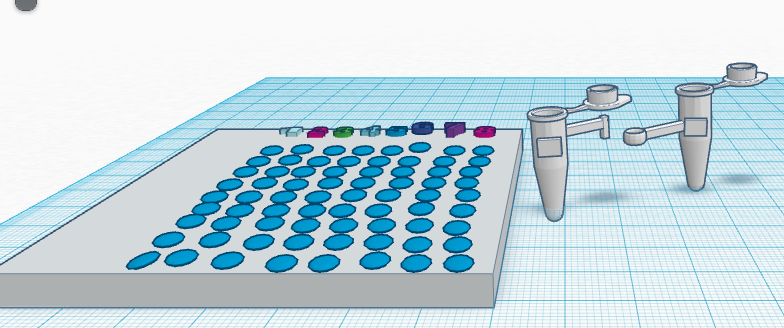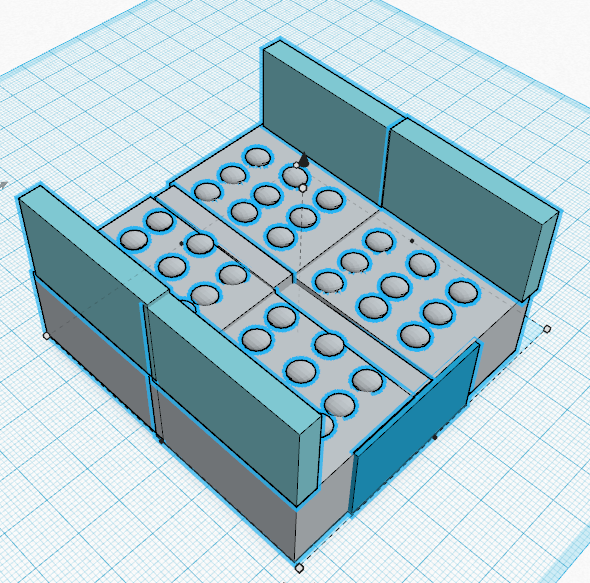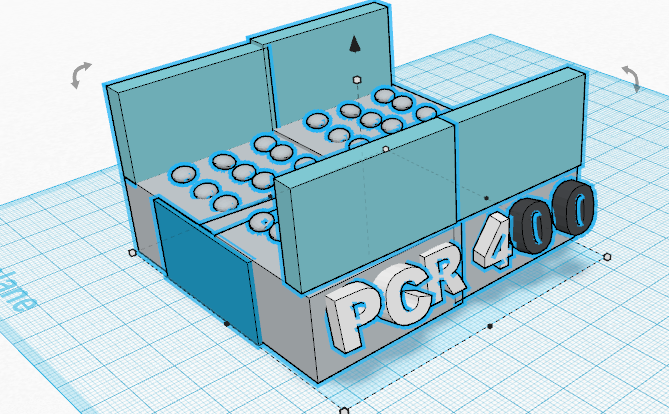BME100 f2013:W1200 Group17 L6
| Home People Lab Write-Up 1 | Lab Write-Up 2 | Lab Write-Up 3 Lab Write-Up 4 | Lab Write-Up 5 | Lab Write-Up 6 Course Logistics For Instructors Photos Wiki Editing Help | ||||||
OUR COMPANY
LAB 6 WRITE-UPComputer-Aided DesignTinkerCAD The TinkerCAD tool is a simple and effective web application used to redesign prefaces or create new models that can be printed out with 3D printers. Previous designs of objects can be modified and changed accordingly in TinkerCAD. New designs can be drafted using various templates and shapes. TinkerCAD also allows the user to scale and orient their design to a specific preference. In lab, the TinkerCAD tool was used to redesign the consumable kits of the PCR hardware, PCR hardware, and fluorimeter hardware system. By using TinkerCAD, adjustments can be made to complement each of the hardware designs to create a more faster, efficient, and simpler experiment. The remodeling of the hardware pieces consists of redesigning the PCR test tubes, and changine the lid of the PCR, and stabilizing the fluorimeter. These new design changes will drastically improve the efficiency of measuring and performing the experiment. Implications of Using TinkerCAD for Design There were a lot of improvements that were made on the PCR test tubes by using TinkerCAD. The test tube that is shown on the image now has a label at the center. This further improves data inventory and helps establish organization on the samples itself. Not only are labels added to the test tubes, but also an attachment component has been added on the tubes. The attachment is just a simple plastic that hooks on to the other tube. It's designed to simply attach and detach from each other with little hassle. This then creates a more flexible way into attaching test tubes together and improves time when applying DNA samples to the test tubes itself. Now users can just attach several test tubes into one and this allows them to save more time when using the pipettes and applying samples into the test tubes.
Feature 1: Cancer SNP-Specific PrimersBackground on the cancer-associated mutation
Primer design
How the primers work: The cancer-specific reverse primer is complimentary only to the rs17879961 cancer mutation. This means that the primer can only hydrogen bond to the specific sequence of the rs17879961 mutation. The bonds formed between the cancer-specific primer and the normal allele are not strong enough and the primer will fall off. The binding of the primer is what allows the Taq Polymerase to bind to the template strand of DNA and begin the elongation phase of PCR. Simply put, without the correct primer, PCR cannot occur and the cancer-specific primer will only replicate DNA if rs17879961 is present, so high DNA concentrations after using this primer in PCR indicate the presence of the cancerous allele.
Feature 2: Consumables KitThe consumables will be packaged into a cube box (not shown in this image), which will be the flourimeter cover. The purpose of this cover is to effectively not allow light to enter the area in which the flourimeter will be placed to take a picture. The cover of the flourimeter will be made of a durable black material with the lid attached to one side. When the cover is in use, the lid will closed, allowing the camera to take an accurate picture of the flourimeter. Instead of placing the lid on the bottom of the box, this lid will be on the top, which will allow individuals to easily access the flourimeter, camera, and stand within the cover. Because of the durability of the box, it will be able to store the tubes, tube cases, and micropipette as well as the flourimeter and slide cases. Depending on the project, consumers can chose to buy the tube, tube cases, and micropipette seperately from the cover. However the cover will be made in order to store all of these objects.
Specifically, there will be small drawer-like compartment that will hold various tubes in each drawer(3).This is a stable stand that will allow consumers to organize as well as store the PCR mixtures effectively. Consumers can also label each drawer according to its contents with a reusable marker that will help with the oraganization of the said mixtures (not shown in image). Each tube case will be able to be placed in a drawer and stored. The tube case will have areas to clearly label the tubes. The image below shows a tube case as well as the tubes used that will be placed in each drawer:
A major weakness in the original design was the lack of area to label the tube cases, tubes, and storage compartments. For students and other individuals, the labeling is fundemental to the organization of an experiment. If the objects used in an experiment are not labeled properly, then the probability of error will increase and will ultimately result in inaccurate data. The new areas on the various objects used in a PCR and Flourimeter experiment as well as a marker made specifically for these objects will help individuals label effectively and accuratly, limiting the probability of error. Flat areas made of a writable material were placed onto the tubes so that individuals can erase or write without damaging the actual tube. Also there are spots to label on the tube case, as well as numbers which will help with the organization of the tubes when placed in a PCR machine. Additionally, in order to not confuse the position of tubes when moving the tubes, small hooks were attached to each tube. Instead of moving one tube at a time and potentially moving the whole tube case (causing instability) individuals can hook a group of tubes together and move them collectively without damaging the position of the tubes that will not be moved. Also, when tubes are moved individually, their positions may be confused, and thus moving a group of tubes together will help limit this error. Feature 3: PCR Machine HardwareThe PCR machine is used to amplify a region of DNA which maybe be used for a variety of applications such as DNA cloning for sequencing or detecting and diagnosing infectious diseases.
One weakness is only being able to to one PCR at a time. The problem with this is that in a class of over a hundred students it is more efficient to buy something that does 4 PCRs with one machine rather than 4 different machines. Also in research labs, researchers may be doing multiple PCRs so it's convenient to have 4 different PCRs going in one machine rather than 4 machines.We designed the PCR machine to have 4 different sections to do 4 different PCRs at once and at different times. By adding 4 sections to our PCR machine, we are able to run fast and efficient samples to be collected in a timely manner. The original PCR was also slow and hard to read so we put in a smarter, more accurate software. The software update will result in more accurate measures throughout the run-time. The LED screen will display the progress of each reaction and the correct amount of time left for the PCR to finish. Our PCR machine can also send data to other wireless networks using Wi-Fi capabilities. Feature 4: Fluorimeter HardwareThe fluorimeter is used to hold the glass slide in place horizontally as the light is moved from one end of the fluorimeter to the other. In the new group design the fluorimeter is accompanied with a black box, a stand with a camera attached, and pieces of velcro that will help hold the box, flourimeter, and stand in place. The cube box, which is also the flourimeter cover, will be made of a durable material that will have a lid at the top that will close when the camera will take a picture of the flourimeter. The camera will be integrated as a stand as well. On the screen of the camera will be a timer that can be set by the individual.
Bonus Opportunity: What Bayesian Stats Imply About The BME100 Diagnostic Approach[Instructions: This section is OPTIONAL, and will get bonus points if answered thoroughly and correctly. Here is a chance to flex some intellectual muscle. In your own words, discuss what the results for calculations 3 and 4 imply about the reliability of CHEK2 PCR for predicting cancer. Please do NOT type the actual numerical values here. Just refer to them as being "less than one" or "very small." The instructors will ask you to submit your actual calculations via e-mail. We are doing so for the sake of academic integrity and to curb any temptation to cheat.] |
||||||





